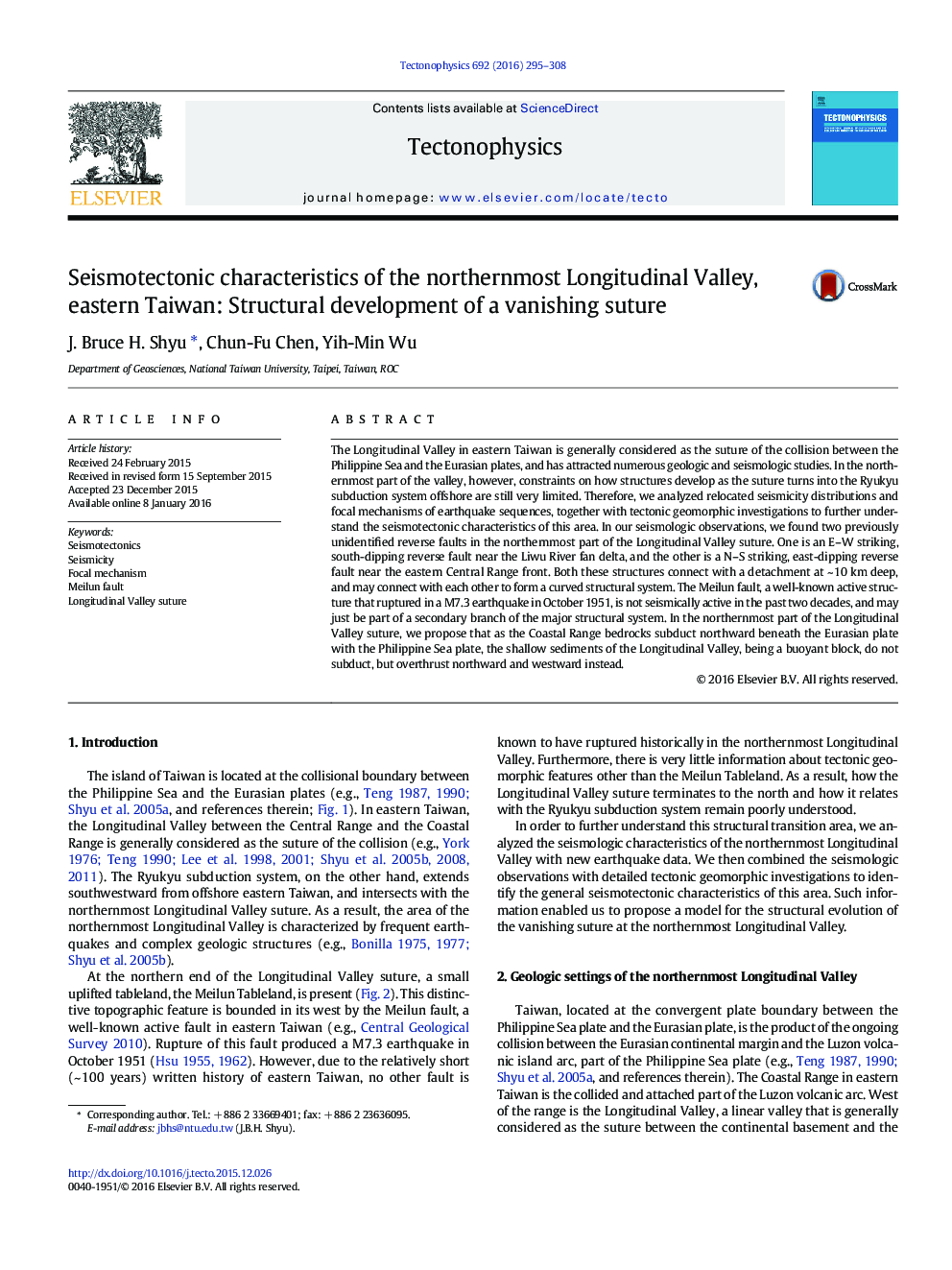| کد مقاله | کد نشریه | سال انتشار | مقاله انگلیسی | نسخه تمام متن |
|---|---|---|---|---|
| 5781820 | 1413900 | 2016 | 14 صفحه PDF | دانلود رایگان |
- We analyzed seismicity distributions and focal mechanisms in the northernmost LV.
- We found two previously unidentified reverse faults in the northernmost LV suture.
- Both structures connect with a detachment at ~Â 10Â km deep to form a major system.
- The Meilun fault may be part of a secondary branch of the major structural system.
The Longitudinal Valley in eastern Taiwan is generally considered as the suture of the collision between the Philippine Sea and the Eurasian plates, and has attracted numerous geologic and seismologic studies. In the northernmost part of the valley, however, constraints on how structures develop as the suture turns into the Ryukyu subduction system offshore are still very limited. Therefore, we analyzed relocated seismicity distributions and focal mechanisms of earthquake sequences, together with tectonic geomorphic investigations to further understand the seismotectonic characteristics of this area. In our seismologic observations, we found two previously unidentified reverse faults in the northernmost part of the Longitudinal Valley suture. One is an E-W striking, south-dipping reverse fault near the Liwu River fan delta, and the other is a N-S striking, east-dipping reverse fault near the eastern Central Range front. Both these structures connect with a detachment at ~Â 10Â km deep, and may connect with each other to form a curved structural system. The Meilun fault, a well-known active structure that ruptured in a M7.3 earthquake in October 1951, is not seismically active in the past two decades, and may just be part of a secondary branch of the major structural system. In the northernmost part of the Longitudinal Valley suture, we propose that as the Coastal Range bedrocks subduct northward beneath the Eurasian plate with the Philippine Sea plate, the shallow sediments of the Longitudinal Valley, being a buoyant block, do not subduct, but overthrust northward and westward instead.
Journal: Tectonophysics - Volume 692, Part B, 5 December 2016, Pages 295-308
